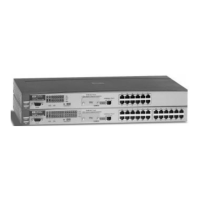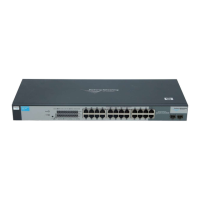4-23
Configuring Secure Shell (SSH)
MoreInformation on SSH Client Public-Key Authentication
To Create a Client-Public-Key Text File. These steps describe how to
copy client-public-keys into the switch for RSA challenge-response authenti-
cation, and require an understanding of how to use your SSH client applica-
tion.
Figure 4-15. Example of a Client Public Key
Notes Comments in public key files, such as smith@support.cairns.com in figure 4-15,
may appear in a SSH client application’s generated public key. While such
comments may help to distinguish one key from another, they do not pose
any restriction on the use of a key by multiple clients and/or users.
Public key illustrations such as the key shown in figure 4-15 usually include
line breaks as a method for showing the whole key. However, in practice, line
breaks in a public key will cause errors resulting in authentication failure.
1. Use your SSH client application to create a public/private key pair. Refer
to the documentation provided with your SSH client application for
details. The switch supports the following client-public-key properties:
Bit Size Public Index
Modulus
Comment
Property Supported
Value
Comments
Key Format ASCII
(no PEM or
other
encoding)
See figure 4-9 on page 4-13. The key must be one unbroken, non-encoded ASCII
string. If you add more than one client-public-key to a file, terminate each key (except
the last one) with a <CR><LF>. Spaces are allowed within the key to delimit the key’s
components. Also, the switch supports only SSH version 1. If your SSH client supports
SSHv2, then it may use the PEM format for creating its public key. In this case, you
will need a method for converting the switch’s PEM-formatted public key into an
ASCII-string equivalent. Note that, unlike the the use of the switch’s public key in an
SSH client application, the format of a client-public-key used by the switch does not
include the client’s IP address.
Key Type RSA only
Maximum Supported
Public Key Length
3072 bits Shorter key lengths allow faster operation, but also mean diminished security.
Maximum Key Size 1024
characters
Includes the bit size, public index, modulus, any comments, <CR>, <LF>, and all blank
spaces.
If necessary, you can use an editor application to verify the size of a key. For example,
placing a client-public-key into a Word for Windows text file and clilcking on File |
Properties | Statistics, lets you view the number of characters in the file, including
spaces.
!FishSecurity.book Page 23 Thursday, October 10, 2002 9:19 PM

